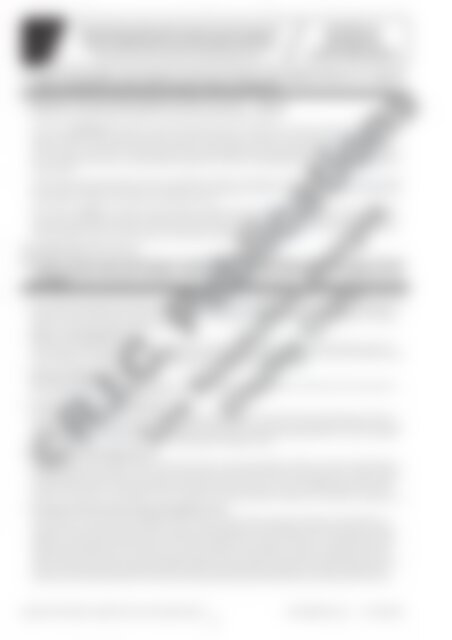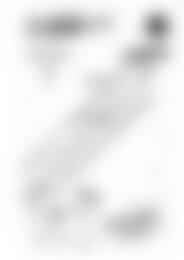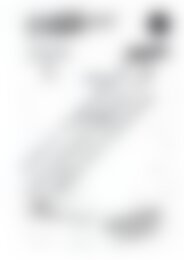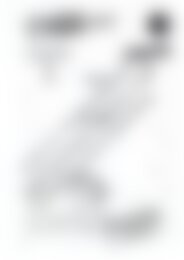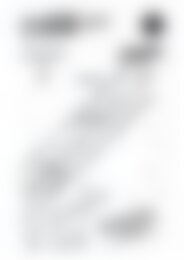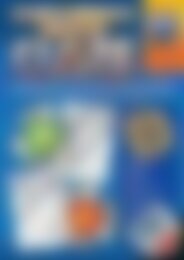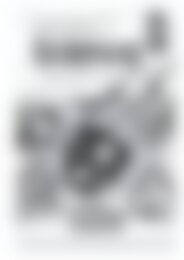20895 ACE Language (Yr 6) Structures and Language Features
You also want an ePaper? Increase the reach of your titles
YUMPU automatically turns print PDFs into web optimized ePapers that Google loves.
Text structure<br />
<strong>and</strong> organisation<br />
Underst<strong>and</strong> how authors often innovate on text structures <strong>and</strong><br />
play with language features to achieve particular aesthetic,<br />
humorous <strong>and</strong> persuasive purposes <strong>and</strong> effects (<strong>ACE</strong>LA1518)<br />
© Australian Curriculum: Assessment <strong>and</strong> Reporting Authority 2012<br />
Activities to<br />
develop the<br />
content description<br />
E1. Analyse <strong>and</strong> compare some elements of the text structure <strong>and</strong> language features of a range of<br />
texts, to identify the reasons for the writers’ choices. (continued)<br />
• Windfarms: how good are they? (page 22) <strong>and</strong> There are monsters … (page 23)<br />
These two texts are about windfarms <strong>and</strong> there are two related activity pages. (See pages 24 <strong>and</strong> 25.)<br />
The fi rst text is a discussion. The title poses a question <strong>and</strong> provides the reader with a subject <strong>and</strong> a context for the discussion. The introduction<br />
gives some background information about harnessing <strong>and</strong> using of the wind’s power in the past. Then, as some readers may not be familiar with<br />
windfarms, <strong>and</strong> may not know what they look like <strong>and</strong> what they do, further background information is provided, supported by an illustration. The<br />
writer then presents some discussion. Some information <strong>and</strong> claims about the positive features of windfarming are discussed, then this is balanced by<br />
some more negative ones. The writer’s concluding statement suggests more information is needed before any true evaluation about how good they<br />
are can be made.<br />
The writer chose to present the positives fi rst <strong>and</strong> not to challenge them. However, this information is prefaced with ’It is claimed ...’ which on careful<br />
reading is signifi cant. When discussing some of the negatives, the writer challenged some of them in a manner which suggested some hard cold facts<br />
about the matter are needed. This is reiterated in the concluding comments.<br />
The second text is a poem. It is one person’s emotional response to windfarms. There is no attempt to discuss the issue or to achieve any balanced<br />
view in this text. It simply states the author’s negative, fearful <strong>and</strong> somewhat fanciful response to windfarms. The metaphor of them as monsters is<br />
sustained throughout the poem. The repetition of ’There are monsters out there’ creates a sense of fear <strong>and</strong> expresses the author’s belief that he/she<br />
is being threatened by them <strong>and</strong> unable to escape the whirling, dancing ’swordsmen’.<br />
Interrelated English links: See page 57.<br />
E2. Examine works which include humour <strong>and</strong> pathos to look at strategies the author used to tell the<br />
reader about the characters’ feelings or build empathy with their point of view or develop concern<br />
for them.<br />
• Ensure students have the opportunity to listen to or read humorous texts such as books by Roald Dahl or Paul Jennings, or A series of unfortunate<br />
events by Lemony Snicket (pen name of Daniel H<strong>and</strong>ler). Books written for younger children such as And to think that I saw it on Mulberry<br />
Street by Dr Seuss may be read to the students <strong>and</strong> used as a basis for a writing activity where the students change characters, events or situations.<br />
Short texts such as knock knock jokes may also be included.<br />
• Humour in texts (pages 26 <strong>and</strong> 27)<br />
Some background information about humour in texts is provided to assist teachers. Writing humorous texts can be extremely diffi cult for adults as<br />
well as students. The information on these two pages may offer some ideas for times when students need to write their own texts. Remember: humour<br />
in texts (or anywhere) is extremely subjective, <strong>and</strong> what one person feels is funny may just make another cringe.<br />
• Humorous language (pages 28 <strong>and</strong> 29)<br />
Before expecting students to read <strong>and</strong> underst<strong>and</strong> longer texts of a humorous nature, make sure students are familiar with common literary devices<br />
such as similes, metaphors <strong>and</strong> hyperbole in shorter texts.<br />
• A visit to Dr Paul White (pages 30 <strong>and</strong> 31)<br />
Ordinary situations with a comical twist can be humorous. Read <strong>and</strong> encourage students to write about ordinary things that happen to them with<br />
changes for humour. Students may write about embarrassing incidents that happen to them, which others may fi nd amusing. The dental visit on page<br />
30 is an example of an ordinary incident with humour. Encourage the students to look for interesting words <strong>and</strong> phrases such as ’erupt’, ’permeate’,<br />
’buzzing bees fi lled his head’, ’hover in clouds’ etc. which create imagery <strong>and</strong> exaggerate feelings.<br />
• The skateboard lesson (pages 32 to 35)<br />
This text combines a number of different aspects of writing humorous texts—the unexpected happens, someone says something unexpected (at the<br />
end), something embarrassing happens to the someone, <strong>and</strong> someone does something clumsy. Teachers should use one text for a number of different<br />
teaching <strong>and</strong> learning activities. The two pages of questions dealing with this text cover both text structure <strong>and</strong> language features. Teachers should<br />
encourage students to look for interesting vocabulary which has been used instead of more common words; for example, ’plummeting’ instead of<br />
’falling’. The use of adjectives can add richness to a noun; for example, ’batty’ Great Aunt Mildred’, ’tangled limbs’, ’horrifi ed faces’, ’stricken face’ etc.<br />
• The solitary troll <strong>and</strong> the three skinny goats (pages 36 to 39)<br />
Fractured tales are stories which have been modifi ed in order to entertain the reader through unexpected characterisation, plot development or a<br />
contrary point of view. Students will enjoy listening to, reading, <strong>and</strong> writing fractured tales. Some examples to share include The book that Jack<br />
wrote by Jon Scieszka, The stinky cheese man <strong>and</strong> other fairly stupid tales by Jon Scieszka, The frog prince continued by Jon Scieszka,<br />
Politically correct bedtime stories by James Garner or Seriously, Cinderella is SO annoying!; The story of Cinderella as told by the<br />
wicked stepmother (Other Side of the Story) by Trisha Sue Speed Shaskan. Although fairytales are traditionally for younger children, older<br />
students will enjoy revamping them. This may be accomplished by rewriting a story as a poem or rap, telling it from a different point of view, taking<br />
a character from the story <strong>and</strong> telling another story concerning him/her, writing a different ending, making the main character a different type of<br />
character or an animal, adding new characters to tell the story, having characters from different fairytales meet or combining two stories into one.<br />
Australian Curriculum English – <strong>Language</strong>: Text structure <strong>and</strong> organisation (Year 6) www.ricpublications.com.au R.I.C. Publications ®<br />
4


